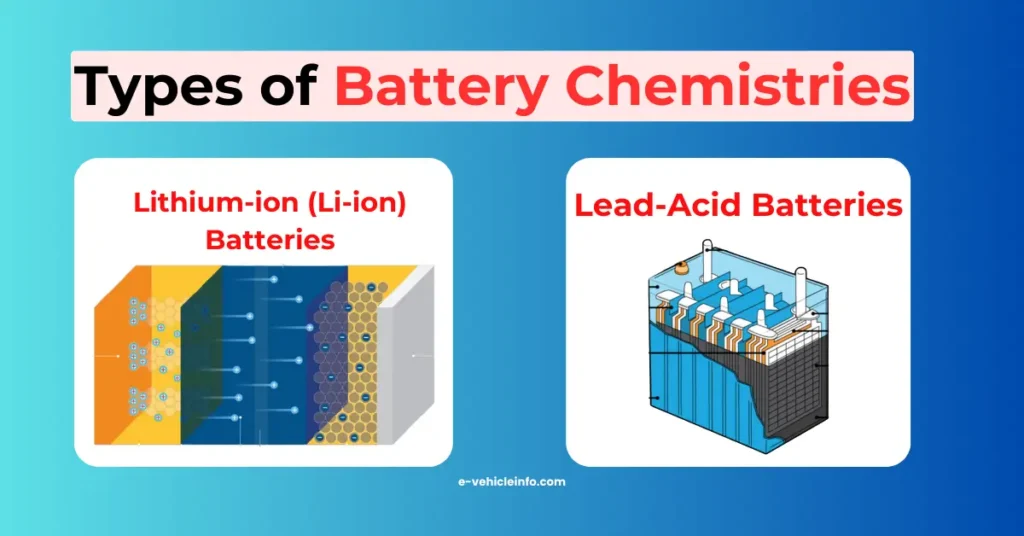
Battery chemistries are the heart of modern energy storage solutions, powering our devices, vehicles, and even homes. These chemistries represent diverse technologies, each with unique materials and mechanisms.
Lithium-ion batteries dominate portable electronics and electric vehicles due to their high energy density and longevity. Lead-acid batteries remain pivotal in automotive and backup power applications with their reliability.
Nickel-cadmium and nickel-metal hydride batteries offer alternatives with good cycle life and lower environmental impact.
Alkaline batteries, with their zinc and manganese dioxide composition, are cost-effective and widely used.
Emerging technologies like solid-state and sodium-ion batteries hold promise for future advancements in energy storage.
Understanding these chemistries is essential for harnessing the power that drives our modern world.
There are several types of battery chemistries, each with its working principles, anode and cathode materials, chemical formulas, and advantages. Here are some of the most common battery chemistries:
Working: Li-ion batteries use lithium ions to move between the anode (typically made of graphite) and the cathode (usually made of lithium cobalt oxide, lithium iron phosphate, or other materials). During discharge, lithium ions move from the anode to the cathode, creating an electrical current.
Cathode Material: Various materials like lithium cobalt oxide (LiCoO2), lithium iron phosphate (LiFePO4), lithium manganese oxide (LiMn2O4), etc.
Chemical Formula: Various, depending on the cathode material.
Advantages:
Working: Lead-acid batteries utilize lead dioxide as the cathode and sponge lead as the anode immersed in a sulfuric acid electrolyte. During discharge, lead and lead dioxide react with sulfuric acid to produce electricity.
Anode Material: Sponge lead (Pb)
Cathode Material: Lead dioxide (PbO2)
Chemical Formula: Pb + PbO2 + 2H2SO4 → 2PbSO4 + 2H2O
Read here – What are the 4 Main Types of Batteries Used in Electric Vehicles?
Working: NiCd batteries have a nickel hydroxide cathode and a cadmium anode separated by a potassium hydroxide electrolyte. During discharge, nickel hydroxide and cadmium react to produce electricity.
Anode Material: Cadmium (Cd)
Cathode Material: Nickel hydroxide (Ni(OH)2)
Chemical Formula: Cd + 2Ni(OH)2 → Cd(OH)2 + 2NiOOH
Anode Material: Hydrogen-absorbing alloy
Cathode Material: Nickel oxyhydroxide (NiOOH)
Chemical Formula: Various, depending on alloy and cathode material.
Anode Material: Zinc (Zn)
Cathode Material: Manganese dioxide (MnO2)
Chemical Formula: Zn + 2MnO2 → ZnO + 2Mn2O3
Comparison table of various battery chemistries, including Lithium-ion, Lead-Acid, Nickel-Cadmium (NiCd), Nickel-Metal Hydride (NiMH), and Alkaline batteries, based on different parameters:
| Parameter | Lithium-Ion | Lead-Acid | Nickel-Cadmium (NiCd) | Nickel-Metal Hydride (NiMH) | Alkaline |
|---|---|---|---|---|---|
| Energy Density (Wh/kg) | High | Moderate | Moderate | Moderate | Moderate |
| Cycle Life | High | Moderate | Moderate | Moderate | Moderate |
| Self-Discharge Rate | Low | Moderate | High | Moderate | Low |
| Environmental Impact | Low | Moderate to High | Moderate to High | Moderate to High | Moderate to High |
| Cost | Moderate to High | Low to Moderate | Moderate | Moderate | Low |
| Common Applications | Electronics, EVs | Automotive, Backup, Power, UPS | Portable Electronics, Power Tools, Aviation | Portable Electronics, Power Tools, Medical Devices | General Purpose, Devices, Toys |
| Anode Material | Graphite | Lead | Cadmium | Hydrogen-absorbing alloy | Zinc |
| Cathode Material | Various | Lead Dioxide | Nickel Hydroxide | Nickel Oxyhydroxide | Manganese Dioxide |
| Typical Voltage (V) | 3.6 – 3.7 | 2.0 – 2.2 | 1.2 | 1.2 | 1.5 |
Electric two-wheeler maker Ultraviolette Automotive has announced a two-day event scheduled for September 22–23, 2025 (Monday–Tuesday). The company has sent…
On August 15th, Ola Electric CEO Bhavish Aggarwal shared the company’s big vision, called “India Inside,” during its Sankalp 2025…
BattRE Electric Mobility, one of India’s leading electric two-wheeler brands, has rolled out an exciting new campaign — #GreenRideWithBattRE —…
In July 2025, Tata Motors sold 7,124 electric cars in India, marking a strong comeback and surpassing MG Motor India's 6,678…
India is progressing rapidly towards a cleaner energy future. Whether it’s electric vehicles (EVs), rooftop solar installations, or industrial power…
India’s electric four-wheeler (E4W) segment surged in July 2025, hitting an all-time high in monthly sales and accelerating its year-to-date…
This website uses cookies.